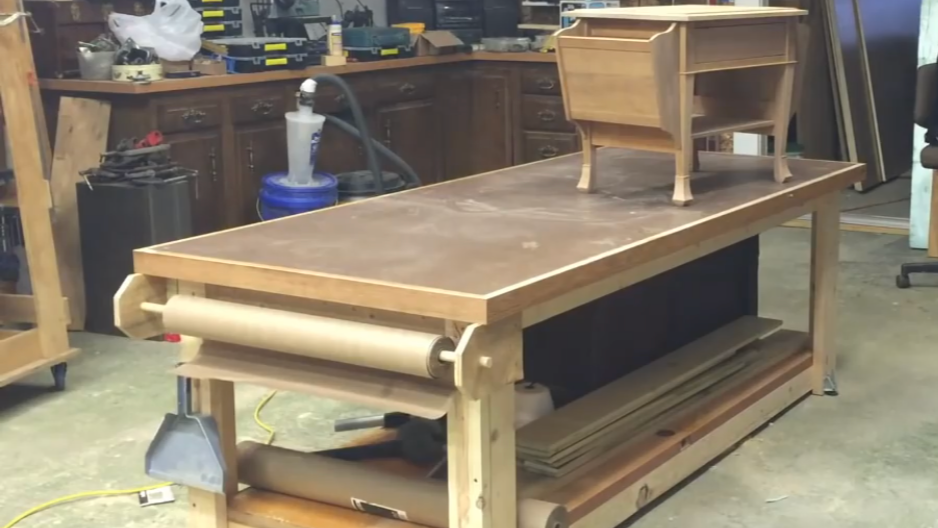I made two separate cabinets that slide in from either side to hold the organizers. I started off by measuring the space I had between the corner post of the table and backed out my spacing from there. One of them I built with 4 columns and 5 rows each slot sized for the Stanley Sortmaster Junior Organizer. On the other side I took a different approach. I had recently purchased a few Harbor Freight organizers. They are smaller than the Stanley, but because the bins are completely removable they have proved nice for storing small tools with accessories like a dremel and also other things that have a combination of large and small parts. I decided that I wanted to build some slots for these organizers on the other side. I also wanted to add a place to store my glue. 95% of the time when I am using glue in my shop it is at my assembly table so I thought it made sense to make a small storage are just for the glue.
At this point, the project could have been finished, however, this project marked a notable change in the Shawnee Hills Workshop. In the past I never put finish on any of my shop projects, honestly it just seemed pointless to me. As I have gotten older though, I have started seeing value in how things look. When you are in a space that you feel relaxed and comfortable in you tend to spend more time in that space and that is what is happening in my workshop as I have been making it look nicer. This table was the first piece I painted when I finished it and it has sparked a complete shop remodel!











